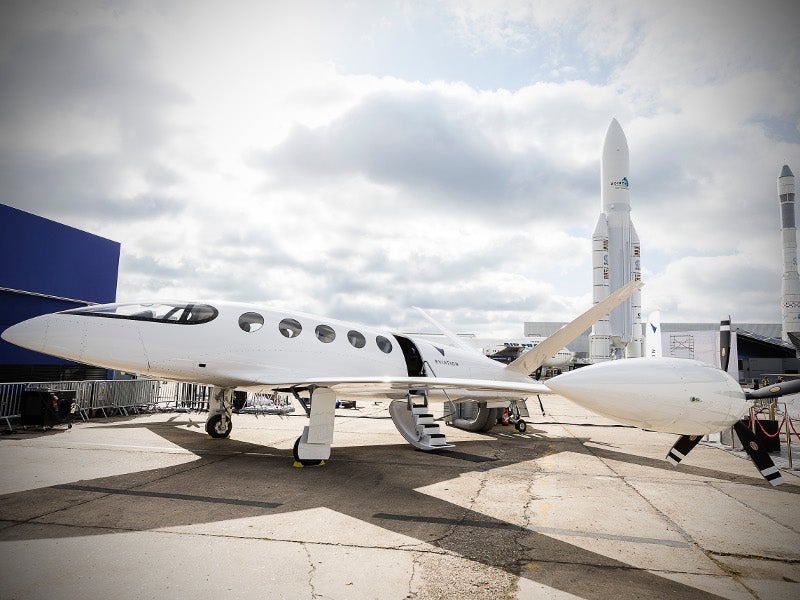Alice Commuter is a regional aircraft that releases zero emissions and operates solely on electric power, making it the first vehicle of its kind.
It is being developed by Eviation, an Israel-based aviation company.
Designed to carry up to nine passengers and two crew in compliance with the FAA Federal Aviation Regulations Part 23, the aircraft is a fully qualified electric commercial business aircraft.
An all-operating prototype of the entirely electric aircraft took part in the 53rd International Paris Air Show 2019. Alice Commuter is currently in the development and testing stage and its first flight is expected to take place in 2019.
It is anticipated that the certification programme of the aircraft will be completed by 2021, preceding its commercial launch the following year.
US regional airline Cape Air has placed orders for Alice Commuter, with deliveries scheduled to commence in 2022.
Alice Commuter design and features
The fuselage of the electric aircraft has been built using lightweight carbon fibre composite material, offering a desirable weight-to-strength ratio.
The aircraft features fixed-wing design, low-wing configuration and a v-tail rear structure. Its take-off and landing operations are supported by a regular tricycle-type retractable landing gear.
The pressurised cabin of the aircraft offers spacious and comfortable window view seating for nine passengers, with direct access to the aisle for each person.
The total length of the aircraft is 12.2m, its wingspan spreading to 16.12m. Alice Commuter’s maximum take-off weight is 6,350kg.
Alice Commuter will boast low operating costs given its all-composite structure and electric energy source, which also results in zero emissions and low noise levels.
Cockpit and avionics
The aircraft integrates Honeywell avionics, fly-by-wire system and flight deck. The large windscreen offers better illumination in the cockpit, which can accommodate two crew members.
The electric aircraft also features a thermal management system to maintain the temperature of the electric engine units and the autonomous landing system.
Alice Commuter aircraft propulsion details
The Alice Commuter aircraft employs a distributed propulsion system that consists of a main pusher propeller, which is reinforced by an additional pair of pusher propellers mounted on the wingtips.
The five-bladed propellers are driven by three 260kW electric motors. The main pusher propeller is capable of performing take-off and landing in the event of wingtip emergency.
The propellers are made of carbon fibre material, with nickel cobalt leading edges. The wingtip propellers aid the reduction of induced drag, while the motors assist with the implementation of self-balancing yawing operations.
The aircraft will also carry 900kWh lithium-ion batteries, which can reach 100% charge within two to three hours.
Performance
When cruising, Alice Commuter can reach a speed of 260k and altitudes of 10,000ft. The aircraft can ascend up to 30,000ft and has a maximum permitted speed of 340k.
Alice Commuter is capable of flying distances of up to 1,046km on a single charge and offers 45-minutes’ back-up power in case of emergencies.
Contractors involved
The American testing, engineering and certification company AeroTEC partnered with Eviation to conduct Alice Commuter’s flight test.
Carboman Group subsidiary Multiplast provides the carbon fibre composite material for the fuselage of the electric aircraft, while Siemens and magniX are supplying the electric propulsion units.
Magnaghi Aeronautica was selected to deliver the landing gear system for the aircraft, which had its propellers specially designed and developed by Hartzell Propeller.
Eviation is also discussing Alice Commuter with various companies based in France, Italy, Germany, US, Australia, Singapore, Israel and South Korea, having collaborated with firms on the aircraft’s development, too.






